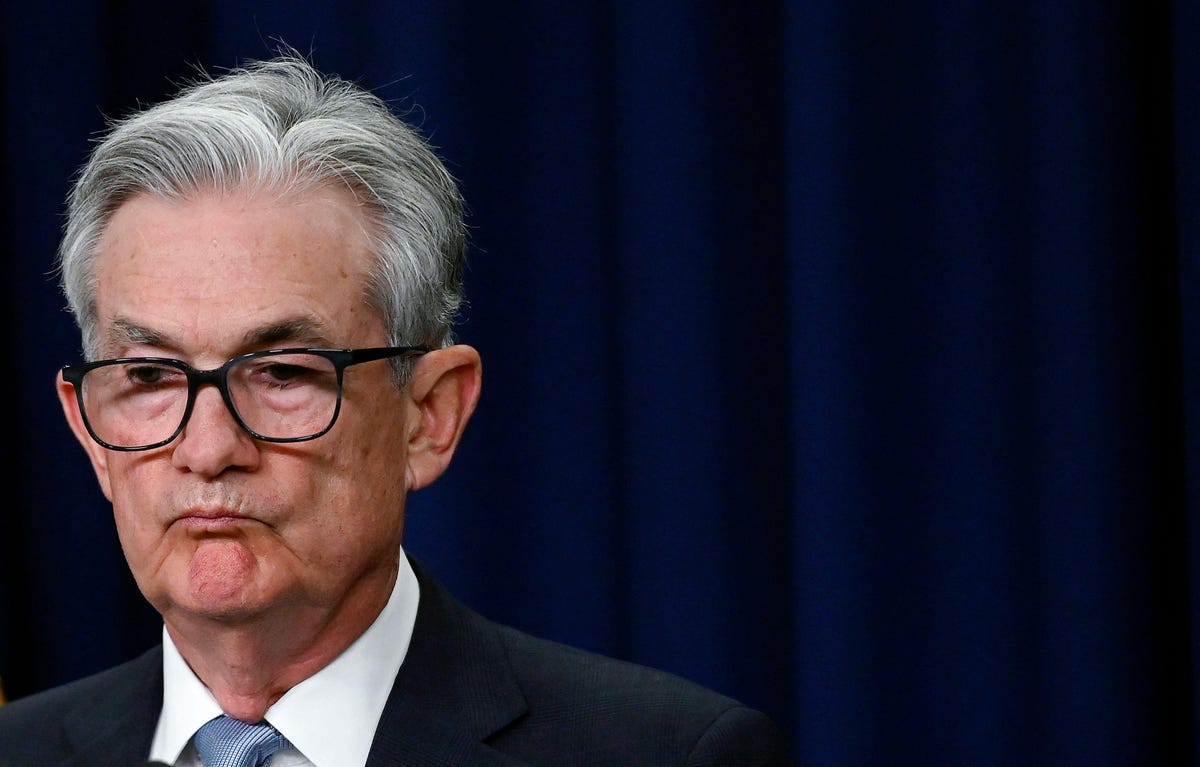Topline
The Federal Reserve hinted Wednesday it may an end to its historic interest rate hike campaign, a crusade that roiled the American economy in an effort to check the worst inflation the nation experienced in a generation.
Key Facts
Interest rates: The Fed has bumped the target federal funds rate from between 0% and 0.25% to between 5% and 5.25% since March 2022—the highest level since September 2007 and the largest 12-month increase since 1980, though the Fed indicated in a Wednesday release it will pause further hikes.
Inflation: In the year ending March, annual inflation slipped from an 8.5% annualized increase to 5%—well below the peak of 9.1% in June but still far above the Fed’s 2% target.
Labor market: Despite the historic inverse relation between inflation and unemployment rate, the American labor market has stayed resilient, and the unemployment rate remains largely flat at 3.5% while annual wage growth remains robust at 4%; Fed chairman Jerome Powell has indicated the central bank likely needs to see higher unemployment and slower wage growth to justify a further cutback on monetary policy.
Stocks: The S&P 500 is down 5% since last year’s first rate hike, rebounding from a decline once as large as 18% as corporate profit margins largely shrank thanks to higher borrowing costs.
Housing market: Thirty-year mortgage rates surged more than 200 basis points from 4.16% to 6.43% over the course of the Fed’s 14-month campaign, while the housing market, which boomed amid the pandemic, slowed considerably, with monthly existing home sales falling 23% while home prices ticked down about 1%, a rare year-over-year decline.
Bank failures: Perhaps the most direct impact of higher rates, the U.S. suffered its second, third and fourth-biggest bank failures ever over the last two months in First Republic, Silicon Valley Bank and Signature Bank, respectively, as the institutions proved unable to recover from higher interest payouts and amid a decline in the value of some debt securities.
What To Watch For
Though investors are largely rooting for a decrease in interest rates to stimulate growth, any cut to the federal funds rate is unlikely to come soon, according to Gargi Chaudhuri, head of investment strategy at BlackRock’s iShares ETF division. “Rates will remain higher for longer as inflation is ebbing but not disappearing,” Chaudhuri wrote Wednesday. The futures market implies a mild decrease to interest rates as the most likely outcome by year’s end, forecasting a 4.25% to 4.5% federal funds rate as the most probable scenario following the Fed’s December meeting, according to the CME FedWatch Tool.
Crucial Quote
“There’s little reason for the Fed to alter its restrictive stance any time soon,” Jason Draho, the head of asset allocation in the UBS Global Wealth Management’s Americas unit, wrote in a Wednesday note to clients. “The Fed will likely be content to sit on the sidelines and hold tight for a while,” Draho continued.
Fed Raises Rates Another 25 Basis Points—Signals Policy Change May Come If Greater ‘Risks Emerge’ (Forbes)
Fed Chair Jerome Powell—Haunted By The Ghost Of Paul Volcker—Could Tank The Economy, Experts Fear (Forbes)
Dow Plunges 500 Points As More Bank Stocks Crash (Forbes)
Read the full article here


